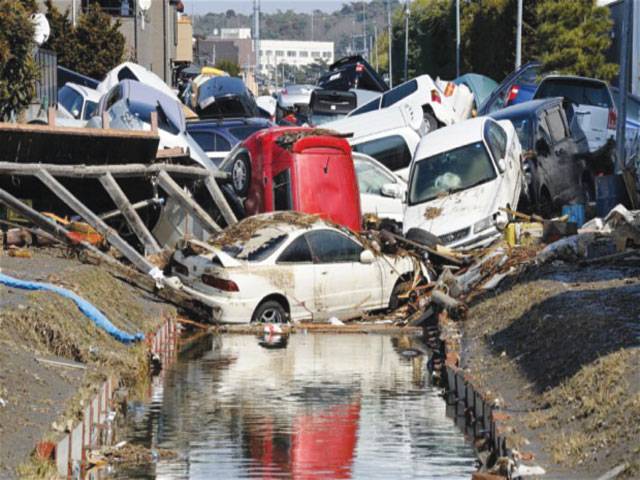TOKYO : A billion dollars of public money earmarked to help people hit by Japan's 2011 quake and tsunami was spent in areas unaffected by the natural disaster, the government admitted Monday. Projects ranging from counting sea turtles on semi-tropical beaches, to the promotion of cheese and wine events hundreds of kilometres from the disaster zone benefited from the largesse, a report said.
While there is no suggestion of corruption, the admissions are an embarrassment for the Japanese government, which has previously acknowledged the country's controversial whaling programme was being supported by disaster money. The Asahi Shimbun, a major daily newspaper, surveyed local authorities around the country to find out what happened to the 200 billion yen (around $2 billion) Tokyo set aside in 2011 for job creation after the disaster. It said 108.5 billion yen was spent in 38 prefectures that were outside the stricken northeast.
In a town in the southern prefecture of Kagoshima, around 1,300 kilometres (800 miles) from the devastated city of Ishinomaki, three million yen was spent on the protection and observation of sea turtles.
Ten people were employed to count the creatures as they came ashore and to remind sightseers not to interfere with them.
"We only counted sea turtles and were not required to move eggs to safe places or do other things. It wasn't even for sea turtles, let alone those hit by the disaster," the daily quoted one of the 10 as saying.
The welfare ministry on Monday defended its spending, saying money had been disbursed around the country for good reason.
"Those who were hit by the disaster were widely spread across the nation at that time and supply chains (for manufacturing industries) were disrupted," said an official at the ministry.
The official said from the financial year that began April 2013, new hirings using public money for reconstruction were limited to those who were hit by the disaster.
Chief Cabinet Secretary Yoshihide Suga, the government's top spokesman, said staff were checking how the money had been used, but noted the reported spending took place under the previous administration.
"After seeing the results, we will take firm measures with a view to stricter rules on use," he told reporters.
According to the Asahi, other publicly-financed projects included the production of a restaurant guidebook in Aichi, central Japan, and the publication of leaflets encouraging safe use of the Internet and mobile phones in nearby Mie.
In the far west of Honshu, money was allocated for advertising the cartoon mascot that promotes Yamaguchi, while Tottori prefecture decided to spend money promoting a local song and dance troupe.
In far northern Hokkaido a project to boost tourism based on the area's wine and cheese culture benefited from the money.
In December 2011 the government said it had spent 2.28 billion yen of money allocated for disaster reconstruction on bolstering security around its whaling fleet as the ships readied to do battle with campaigners in the Southern Ocean.
More than 18,000 people died when the towering tsunami smashed into Japan's northeast in March 2011.
Vast stretches of coastline were devastated and hundreds of thousands of people were made homeless in the catastrophe, which also set off a nuclear crisis at Fukushima.
Factories and farmland were put out of action, generating widespread unemployment that persists more than two years after the disaster.
The government of Prime Minister Shinzo Abe plans to allocate 25 trillion yen over five years to fund reconstruction from the disaster, including building new homes and public facilities.
More than half of this sum is to be raised through higher taxes.
Saturday, April 20, 2024
Japan disaster cash spent on counting turtles

Heavy rains claim 98 lives, 89 injuries, across Pakistan: NDMA
1:21 PM | April 20, 2024
Watercourse project to help increase crop yields in Punjab
12:57 PM | April 20, 2024
Justice Ishtiaq Ibrahim sworn in as PHC chief justice
12:54 PM | April 20, 2024
Policitising Tragedy
April 20, 2024
Tehran to Rafah
April 20, 2024
A New Leaf
April 20, 2024
A Tense Neighbourhood
April 19, 2024
Dubai Underwater
April 19, 2024
Dangers of Deepfakes
April 20, 2024
Feudalism
April 20, 2024
Kite tragedy
April 19, 2024
Discipline dilemma
April 19, 2024
Urgent plea
April 19, 2024
ePaper - Nawaiwaqt
Advertisement
Nawaiwaqt Group | Copyright © 2024





